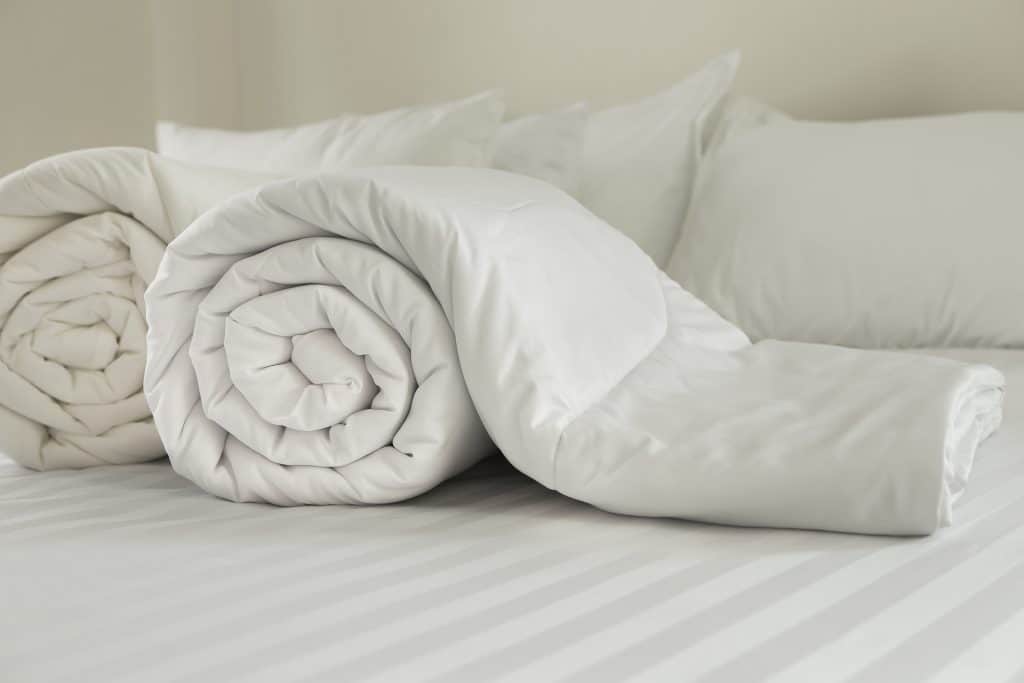Duvets
What Does Tog Mean in Duvets?
Approximately one-third of our lives is spent sleeping. Hence, it is important to invest in the finest bedding. Doing so will improve the quality of your sleep.
When it comes to purchasing a duvet, quality and comfort are the two important factors that matter. But sometimes you can easily get confused by technical terms such as “tog”. While tog may not describe the quality of the duvet, it refers to the warmth of the material. This is an important aspect that can influence the comfort of the duvet.
There are different types of duvets out there. Usually, they range from £20 to over a hundred. Be sure to know what you want before making a decision.
Tog Ratings

When choosing duvets, it is important to know if they can keep you warm, especially during the winter season. That is why you must know the tog rating of your duvet. Most often, tog ratings can be found on the duvet packaging. It refers to warmth or thermal resistance, in other words, how effectively a duvet can trap warm air so you are well insulated at night time.
What is the Best Tog Rating for You?
When choosing the perfect tog rating for your duvets, you need to understand that the higher the tog rating, the warmer the duvet. The tog rating is used for determining the warmth or thermal resistance of a particular product. It is commonly used in the UK to describe the warmth level of duvets. Usually, tog ratings can range from 1 to 15, 1 tog being the coolest and 15 tog the warmest.
How Do Tog Ratings Work?
Tog ratings give you a good estimate of the level of warmth. Tog ratings are calculated, based on a flat surface. However, this might not reflect the same environment when sleeping. Avoid buying cheap duvets since they are made of poor quality materials with a low tog rating. They will not give you enough warmth on the colder nights.
Which Tog Rating is Right for You?
Traditionally, we always choose our duvets based on the season. For the summer season, you can choose a 1-7 tog duvet, but the most popular choice is 4.5. This can help prevent overheating during those long, hot summer nights. In Europe, they usually choose 10.5 tog duvets. This is a good option if you are sharing your bed with someone else since they can add to the warmth factor.
Conversely, during the winter season, the best choice would be 10.5 tog or above. Most people would choose 15 tog duvets for cold environments. Buying numerous duvets might not be an affordable option. If you want to buy a duvet that you can use throughout the year, then a 10.5 tog would be a great compromise.
Nowadays, central heating is commonly used in homes and manufacturers are using advanced technology in duvets, which is why all-season duvets are appropriate.
Types of Duvets
Summer Duvets
A lower tog rating is perfect for summer. During the summer months, the temperature tends to get higher, which means you require less insulation. If you want to reduce your sleepless nights, then choose a duvet less than a 7 tog. This can keep you cooler during those long summer nights.

Winter Duvets
The nights can get colder during the winter. Hence, it only makes sense to get a warmer duvet throughout these cold months. A duvet with a 10.5 tog rating or above would be a good choice. It can provide you with more insulation.
All-season Duvets
All-season duvets are great for any climate. A 10.5 tog duvet is perfect. Alternatively, you can combine two separate duvets and use them for winter.
Can the Tog Rating Affect the Weight of the Duvet?
The weight and tog of a duvet are correlated. Typically the higher the tog, the heavier the duvet. Different types of materials are used in filling duvets: feathers, down, silk or synthetic. Duvets filled with feathers or down have better thermal properties compared to those that are filled with synthetic. This means that it does not require a lot of filling to obtain the desired tog rating. As a result, the duvet is much lighter.
Silk duvets are entirely different since they are measured by grams of silk per square metre (GSM) and not by tog ratings. For a 2-4 tog rating, the duvet should approximately have a 250gsm filling. For a 7-9 tog rating, the filling is roughly 400gsm, while a 10-13 tog rating can be achieved by having a 600gsm filling.
Aside from the type of filling used in the duvet, the tog rating can also be affected by the type of fabric used. Generally, larger walled pockets have higher tog ratings, while smaller pockets are used in lower tog duvets. This can help reduce the risk of cold spots in a duvet.
For superior insulation, you can opt for duvets that use premium fillings such as goose and duck down. These materials can effectively retain warmth while you are sleeping. High-end synthetic fillings are a better option than the cheaper synthetic alternatives since they can more effectively trap air and retain warmth.
Duvet cases should be made of natural 100% cotton since it can provide more breathability compared to cases that are made of microfibre or polyester.

